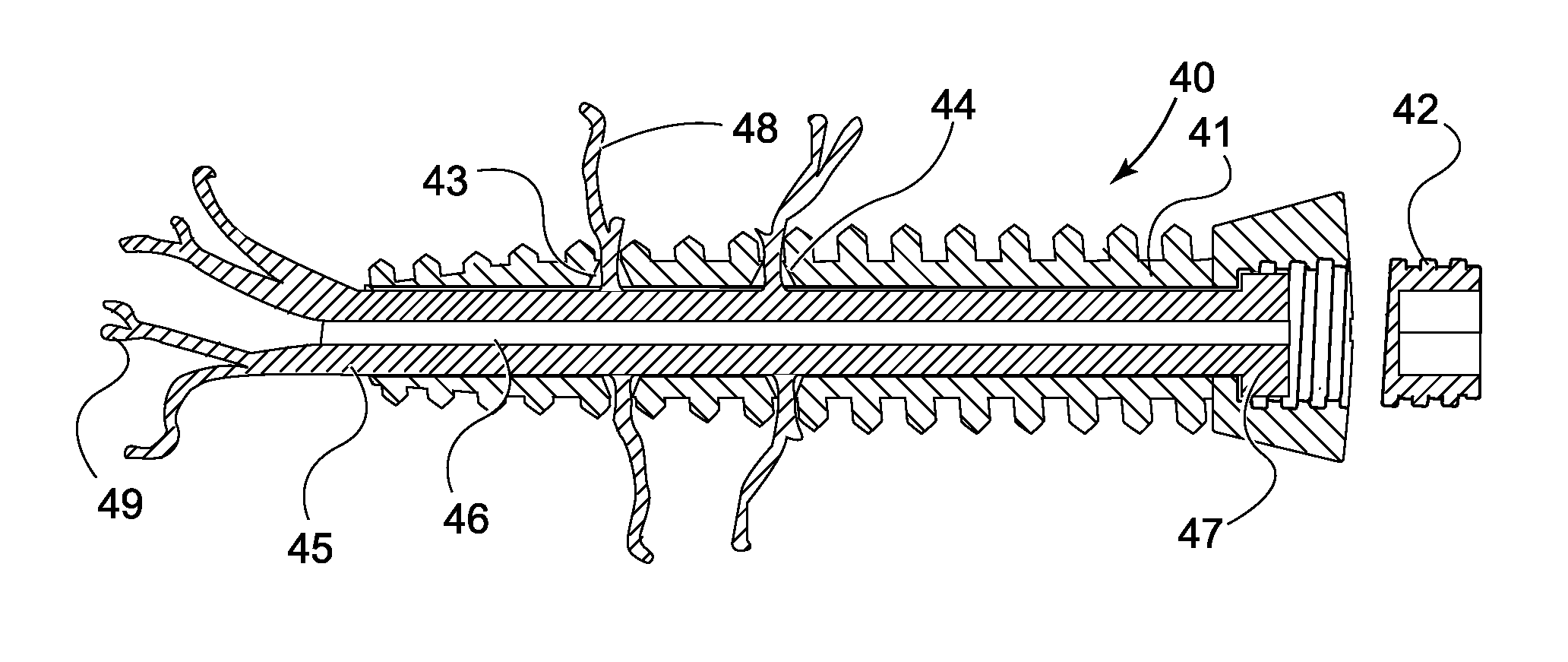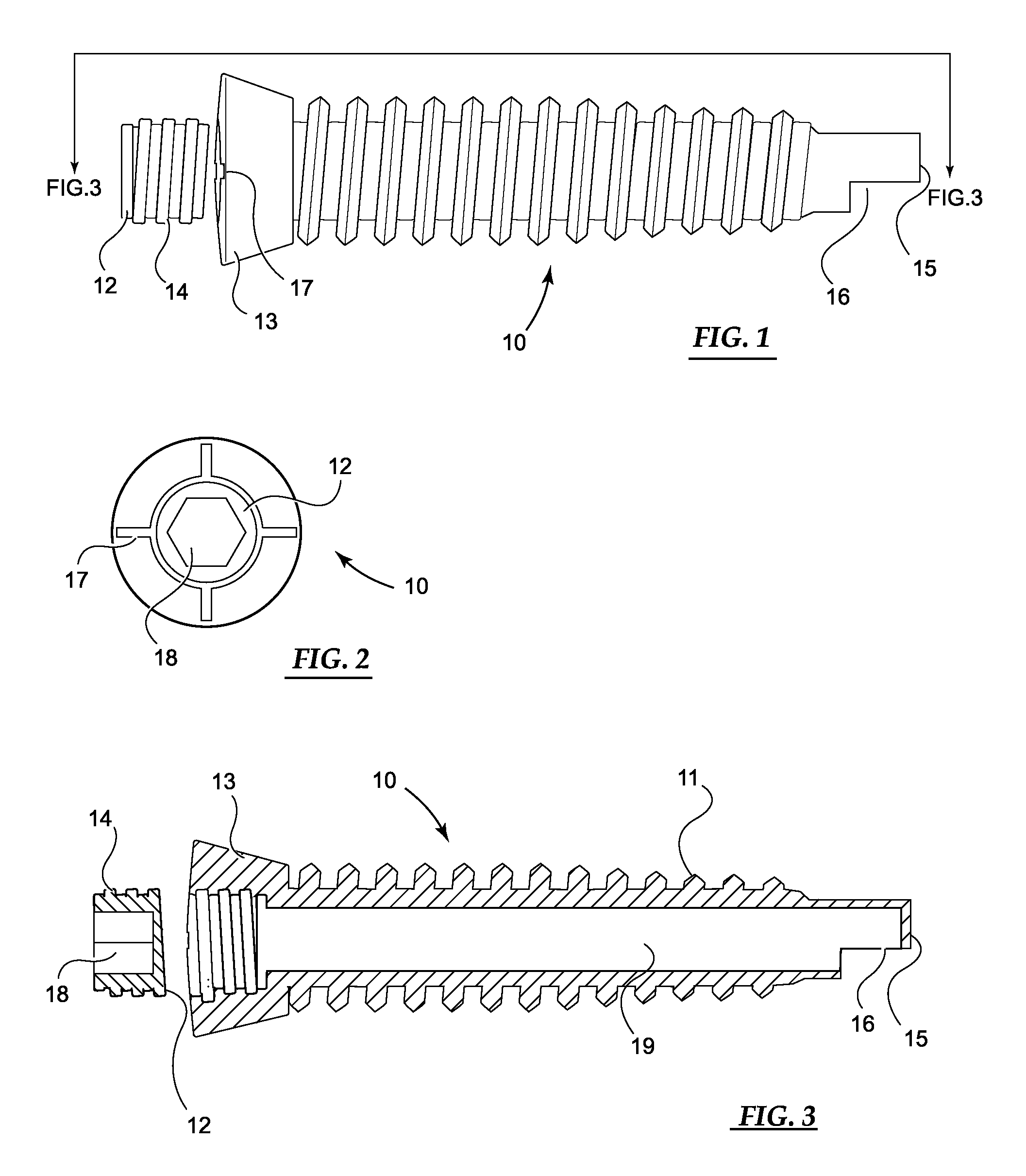Device and method for orthopedic fracture fixation
a technology for fixing and stabilizing devices and orthopedic fractures, applied in the field of orthopedic fracture fixation and stabilization devices, can solve the problems of severe limitation of activity, constant pain, serious reduction of quality of life, etc., and achieve the effect of preventing the subsequent post-operative loosening of bone screws
- Summary
- Abstract
- Description
- Claims
- Application Information
AI Technical Summary
Benefits of technology
Problems solved by technology
Method used
Image
Examples
Embodiment Construction
[0045]For the purposes of the invention described in this application, the certain terms shall be interpreted as shown below.
[0046]The term ‘cannulated’ describes the property of an object as being hollow or tubular and affording a passage through its interior length for a flowable materials and suitably sized solid objects such as catheters, rods, wires, threads, and the like.
[0047]The term ‘side-port’ describes any orifice in the wall of a tube, pipe or cannula that allows communication between the lumen of the tube, pipe or cannula and an outside area.
[0048]The term ‘flowable material’ describes any injectable material that flows as a uniform mass when an appropriate pressure is applied. Such flowable materials may comprise solutions, emulsions, suspensions, slurries, pastes, gels, polymerizable monomers, liquid polymers, oligomers, and all mixtures or combinations thereof.
[0049]Basic embodiments of the orthopedic fixation devices of the present invention comprise: a cannulated o...
PUM
 Login to View More
Login to View More Abstract
Description
Claims
Application Information
 Login to View More
Login to View More - R&D
- Intellectual Property
- Life Sciences
- Materials
- Tech Scout
- Unparalleled Data Quality
- Higher Quality Content
- 60% Fewer Hallucinations
Browse by: Latest US Patents, China's latest patents, Technical Efficacy Thesaurus, Application Domain, Technology Topic, Popular Technical Reports.
© 2025 PatSnap. All rights reserved.Legal|Privacy policy|Modern Slavery Act Transparency Statement|Sitemap|About US| Contact US: help@patsnap.com



